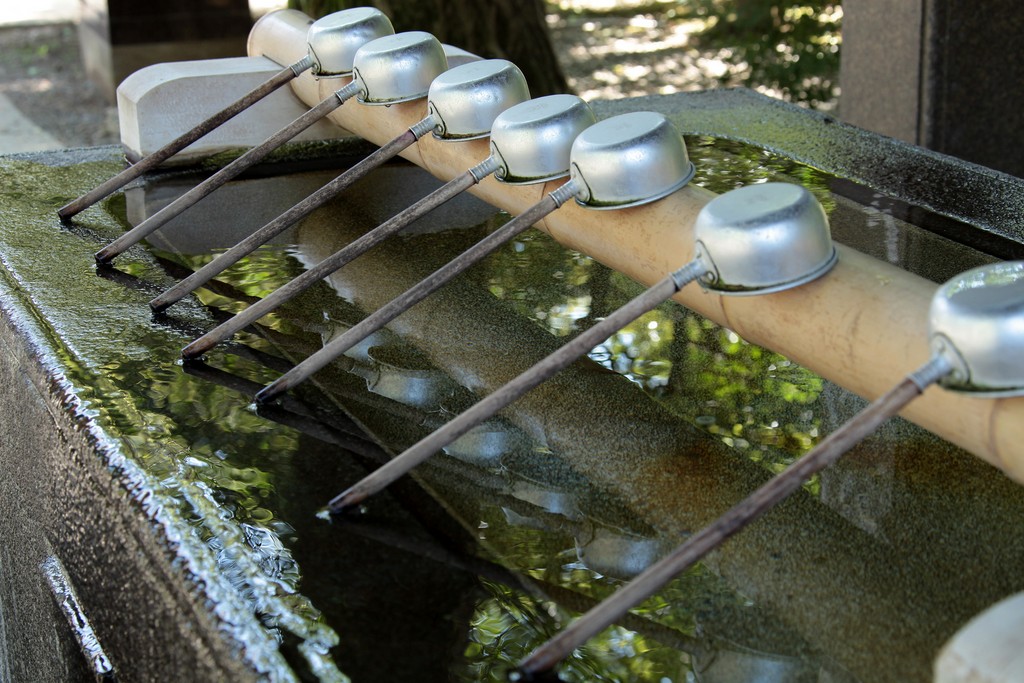LOUCHE HISHAKU TEMPLE SHINTO
Avant d'entrer dans le sanctuaire, les personnes font des ablutions à l'aide d'une louche (hishaku). Elle peut être en métal ou en bambou.
Elles servent pour une cérémonie shintô de purification par ablutions (misogi) et rites de repentance nommée harae ou harai (祓). Cette purification est nécessaire aux fidèles shinto qui souhaiteraient aller prier au sanctuaire.
---------------------------------------------
A wooden or metal dipper, called the hishaku (柄杓; take-bishaku 竹柄杓 “bamboo dipper”; tsukubai-bishaku 蹲い柄杓 “tsukubai dipper”), is used to scoop water for ritual ablutions in gardens, shrines, and temples.
The bole of a large bamboo or a steam-curved cedar cup attached to a thin bamboo handle was a popular design in the past, but metal or even plastic dippers are more prevalent today. These dippers are sometimes rested on racks of thin bamboo. On a practical note, in basins where running water is not feasible, coils of copper wire are sometimes placed in the water to prevent the growth of algae and to kill mosquito larvae.
Harae or harai (祓 or 祓い) is the general term for rituals of purification in Shinto. Harae is one of four essential elements involved in a Shinto ceremony. The purpose is the purification of pollution or sins (tsumi) and uncleanness (kegare). These concepts include bad luck and disease as well as guilt in the English sense.
---------------------------------------------
A wooden or metal dipper, called the hishaku (柄杓; take-bishaku 竹柄杓 “bamboo dipper”; tsukubai-bishaku 蹲い柄杓 “tsukubai dipper”), is used to scoop water for ritual ablutions in gardens, shrines, and temples.
The bole of a large bamboo or a steam-curved cedar cup attached to a thin bamboo handle was a popular design in the past, but metal or even plastic dippers are more prevalent today. These dippers are sometimes rested on racks of thin bamboo. On a practical note, in basins where running water is not feasible, coils of copper wire are sometimes placed in the water to prevent the growth of algae and to kill mosquito larvae.
Harae or harai (祓 or 祓い) is the general term for rituals of purification in Shinto. Harae is one of four essential elements involved in a Shinto ceremony. The purpose is the purification of pollution or sins (tsumi) and uncleanness (kegare). These concepts include bad luck and disease as well as guilt in the English sense.
